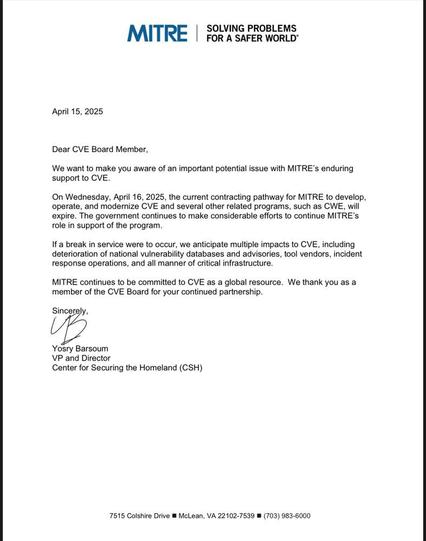#infosec people, THIS is big and you need it in front of management RIGHT NOW.
MITRE has informed the CVE board members that effective TONIGHT, funding to run CVE and CWE is effectively gone. The US federal government contracts MITRE to run these programs including both management, operations, and infrastructure.
This not only could but almost certainly will result in disruptions to CVE and CWE including a halt of all operations if new contracts/funding are not secured.





